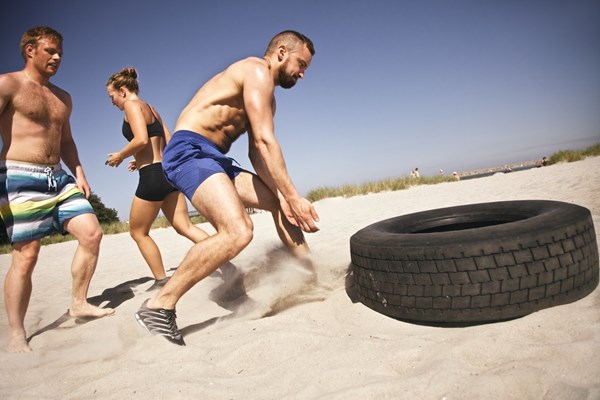It’s November. There’s only four weeks until summer and only four weeks until the ‘silly season’ officially commences. Reality is kicking in. How do you go about getting that summer body you say you’ll get every year?
It seems everywhere you go, everyone is currently on, or just about to start, a ‘Challenge’. Coined by gyms around the country, these challenges are now for everybody. It’s a period where you concentrate on what you eat and start up an excessive amount of exercise so you’ll look and feel your best, when you undo it all in December.
Challenges aren’t a bad thing. Anything that gets people moving more and eating better, is great. It’s just that for most people – who perhaps have not done, or are not used to doing, intense exercise each week – this is a time when injuries can occur.
Being smart about exercise is going to help you get through this period injury-free (albeit, still with sore muscles!). Here are some things to be sure you do each and every work out to ensure you do stay free from injury and niggles:
Warm up . It is never a good idea to workout muscles that are cold. Make sure you are warming up your body to increase your body’s core temperature, blood flow to the working muscles, and also to mentally prepare yourself for the workout ahead.
Cross Train . Your body will thank you when you change up your routine by engaging in different activities. This will not only help you avoid hitting a plateau with your workouts, it will give your muscles a much needed break from the same routine day in and day out. Plus, not only will your body benefit from diversifying your exercise routine, but so will your metabolism. Studies show that switching up your daily exercises can rev up your fat-burning.
Be smart about your training . Just because you could do a specific exercise 10 or 20 years ago, doesn’t mean you can exercise with the same speed and energy today. Be realistic about your training and not focus on what you use to do. “Too much, too soon” can be the number one reason why injuries occur. Gradually increase your time and the intensity of your workouts to prevent those nagging injuries.
Wear proper workout attire. If you have to think about how long ago you purchased a new pair of running shoes, then it is definitely time to head to the store. Going to a specialty store for expert advice on what shoes you should be wearing is the first step because they can gauge what shoe fits best with your arch, gait and body weight. So many injuries come from wearing worn out shoes without any support. Your poor feet!
Eat a balanced diet and hydrate. What you eat and drink is just as important as your workout. Not only will carbohydrates give you energy for your workout, they will replenish those glycogen stores for your recovery and for the next workout. Protein after your workout is just as important as this will help repair those muscles you just broke down. Work with a sports nutritionist to understand when, how much, and what foods you should be eating to keep you healthy and energized for your workouts.
Add strength training and core work to your routine. Having a strong fit body is a great way to keep the injuries away. If your muscles are balanced with a strong core then your body will not wear down or have to compensate for being weak or tight.
Listen to your body with rest and recovery. Your body will give you the signals you need to know when to back off. If that knee is feeling a little achy, your soreness lasts for more than the recommended 24 to 48 hours, or you are just plain tired, then it is time to look over your exercise routine. Rest and recovery might be what your body is looking for. Make sure you take those rest days as your body is making actual gains during this time.
If injury has got the better of you already, make an appointment with one of our physios. We’ll sort you out!

